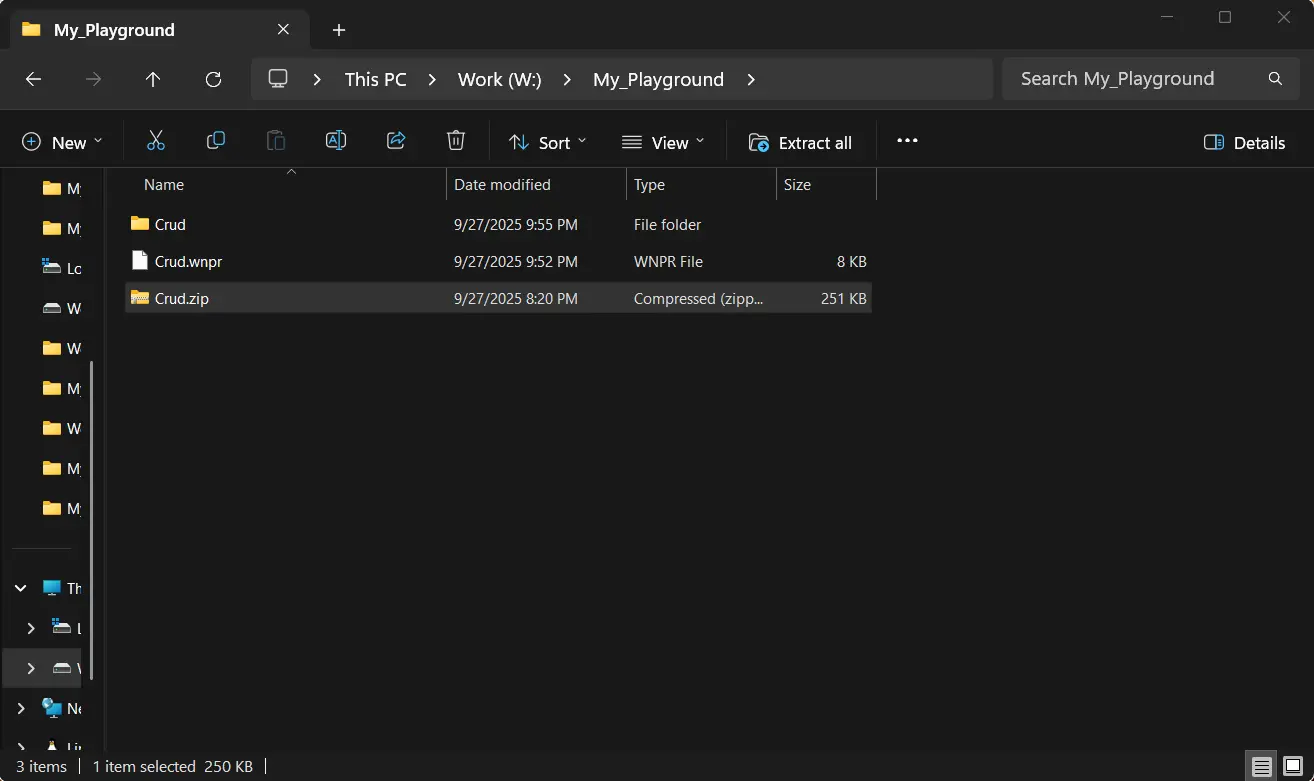UCAGEN – Unified Client Architecture Generator
Transforming client software development with the Invariant Pattern for predictable, robust, extendable, and easily testable applications.
Automate Client Software Development and Reduce Costs by 3x
About UCAGEN
UCAGEN is a generator of unified client application architecture based on the Invariant Pattern. It helps teams produce predictable, testable skeletons for web, desktop, and mobile apps without being locked to a specific UI framework. From a single declarative specification you can create projects for Java, C#, Swift, TypeScript, and Flutter, then iterate quickly with consistent naming, file layout, and contracts.
Use UCAGEN to accelerate green-field projects, modernize and refactor legacy applications, standardize internal templates, and reduce hand-written boilerplate. The approach lowers cognitive load, improves cross-team collaboration, and makes code reviews and onboarding faster. Whether you are building CRUD tools or complex enterprise clients, UCAGEN provides a deterministic structure that is easy to extend and maintain.
Core Capabilities
Invariant Pattern
Implements a deterministic architectural pattern for client applications, consistent across all UI platforms and programming languages.
Architecture Generation
Automatically generates SOLID-based architecture with OOP abstractions, providing a clean, maintainable project skeleton for each platform.
Unified Development Consistency
Enforces a single coherent approach to project structure and code templates, ensuring uniform design practices across teams and stacks.
Benefits
Freedom of Choice
- Works with any UI framework or platform, so teams keep their preferred tools.
- Future-proof design avoids lock-in and reduces risk of technology obsolescence.
Reduced Cognitive Load
- One consistent approach across web, mobile, desktop, and embedded systems.
- Developers focus on business logic instead of learning new architectural rules each time.
Seamless Team Collaboration
- Unifies developers working on different platforms under shared abstractions.
- Removes silos and accelerates cross-team integration of features.
Get Early Access
Sign up to be notified when UCAGEN is officially launched.
Supported UI Platforms
Desktop
Mobile
- Java Android
- iOS Native (Planning)
- Unity 3D (Mobile)
FAQ
-
Prepare specification in terms of atoms – you define the key operations as atomic units.
For example, in a CRUD-style product management app, typical atoms would be
CreateProductAtom,UpdateProductAtom,DeleteProductAtom, andListProductsAtom.
This is done using the web client (default) or the desktop client (for enterprise environments).
Atoms are then bound to user interactions via View templates — for example, bindingCreateProductAtomto a “Create” button, orListProductsAtomto the initialization of a product table.
The target platform (e.g., Java, C#, TypeScript) is selected separately at the code generation stage. - Generate code – download archive with folders/files for the chosen platform.
- Connect code – integrate into a new or existing application template.
- Fill logic & validation slots – usually with AI assistance.
- Complete UI templates – design and refine the interface.
- C#: WPF, WinForms, UWP, Unity3D
- Java: JavaFX, Swing, Android
- TypeScript: Web (HTML, CSS, TS)
- Swift: macOS
- Flutter (experimental)
- Generating logic inside function templates
- Creating validation rules
- Prototyping and refining unit tests
- Designing UI layouts
A few simple steps to build your application’s skeleton!
UCAGEN Desktop version
Click to animate...
Create Atoms
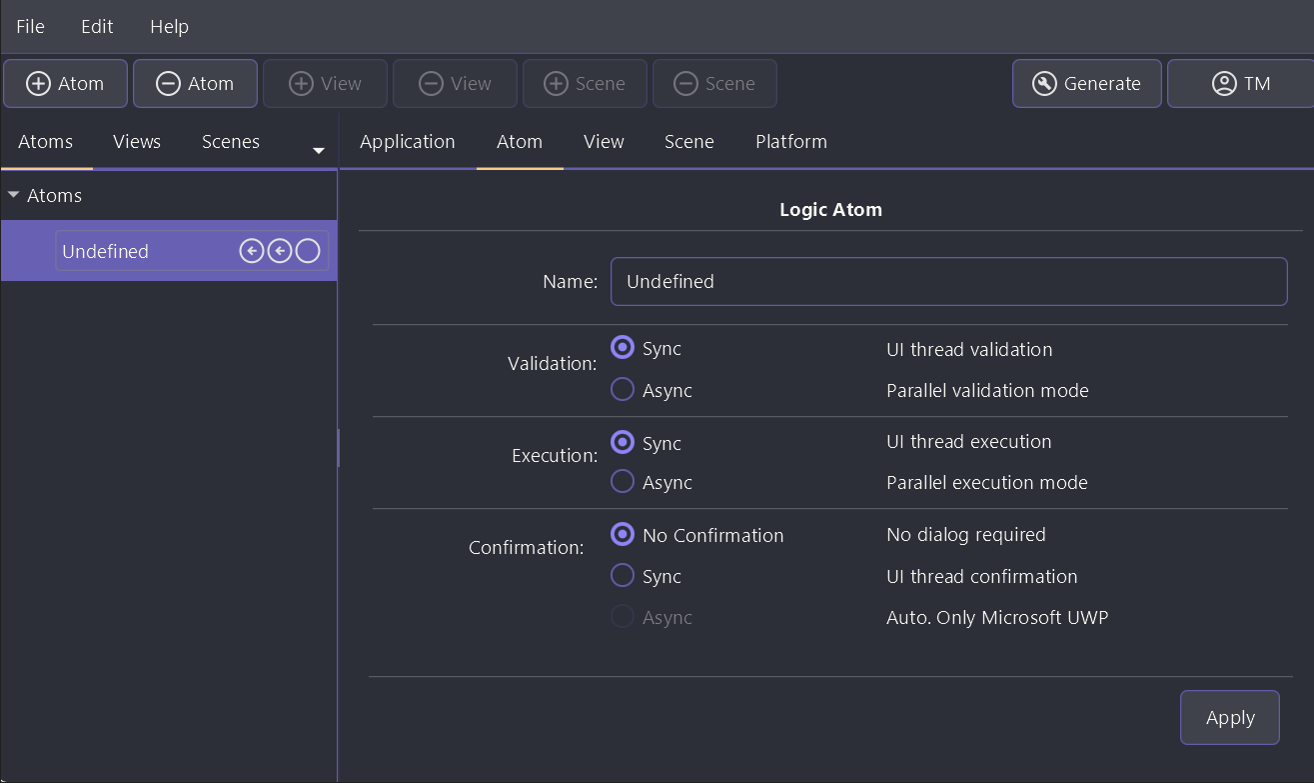
Create Views
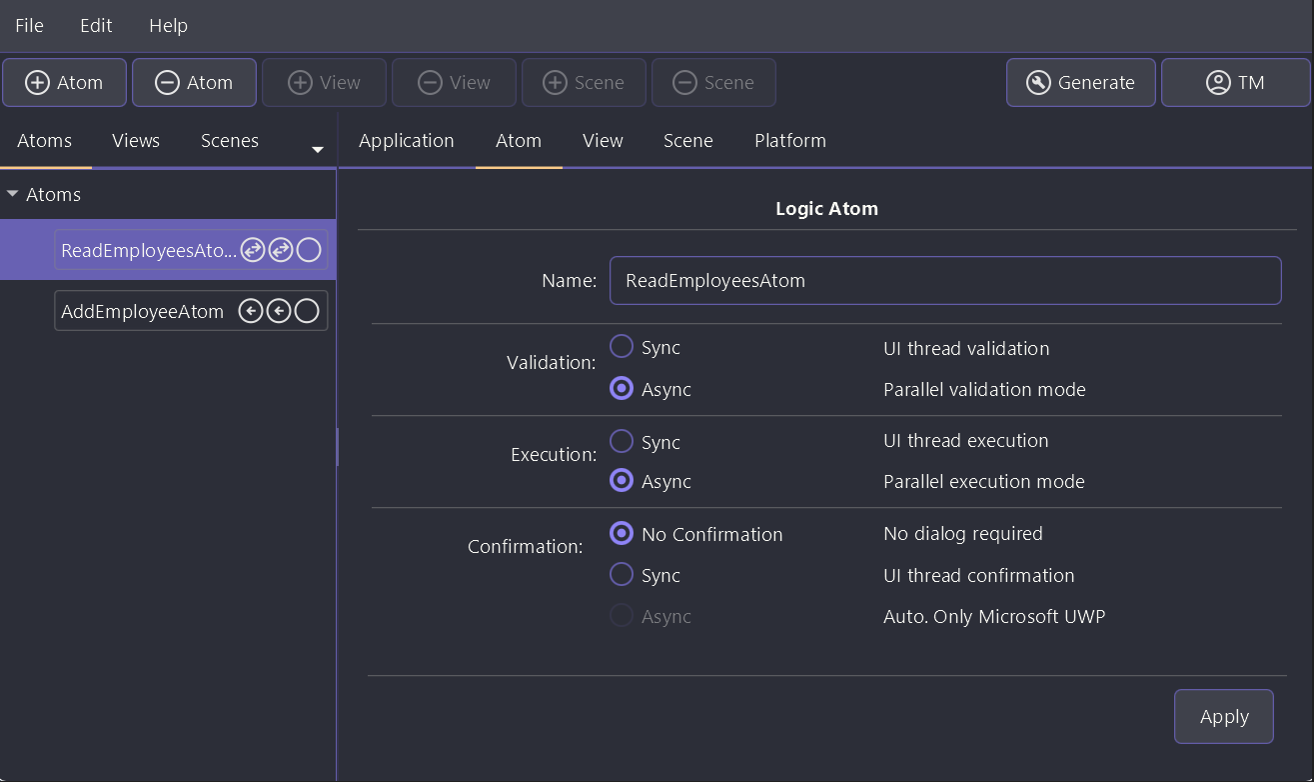
Set Platforms
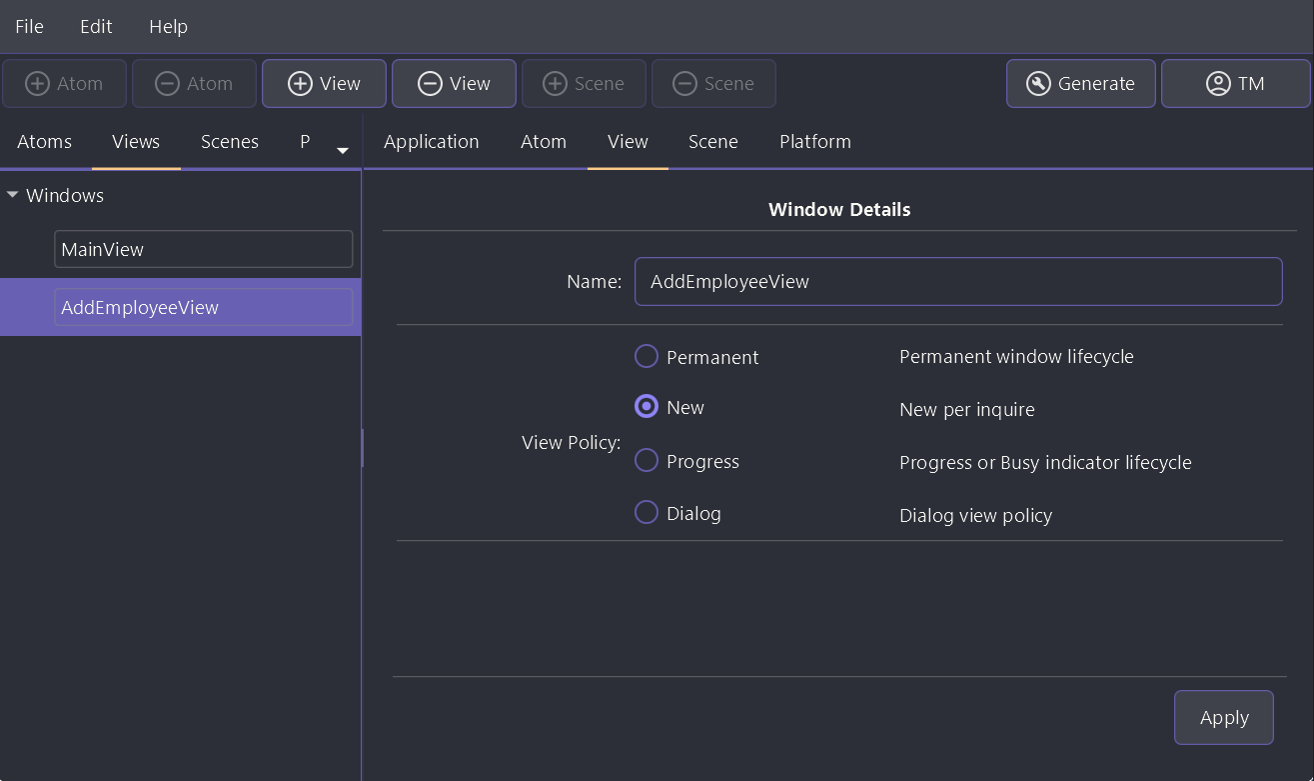
Generate Code
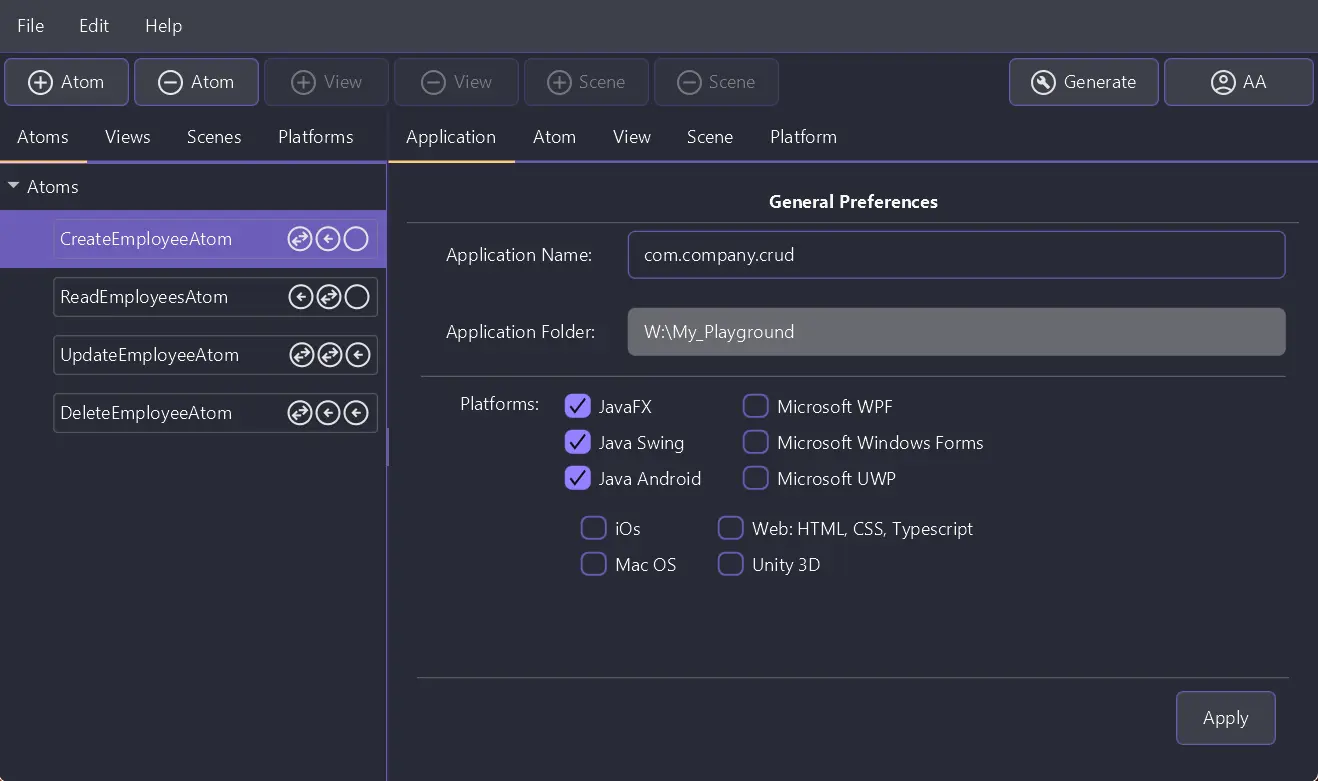
Review the result
